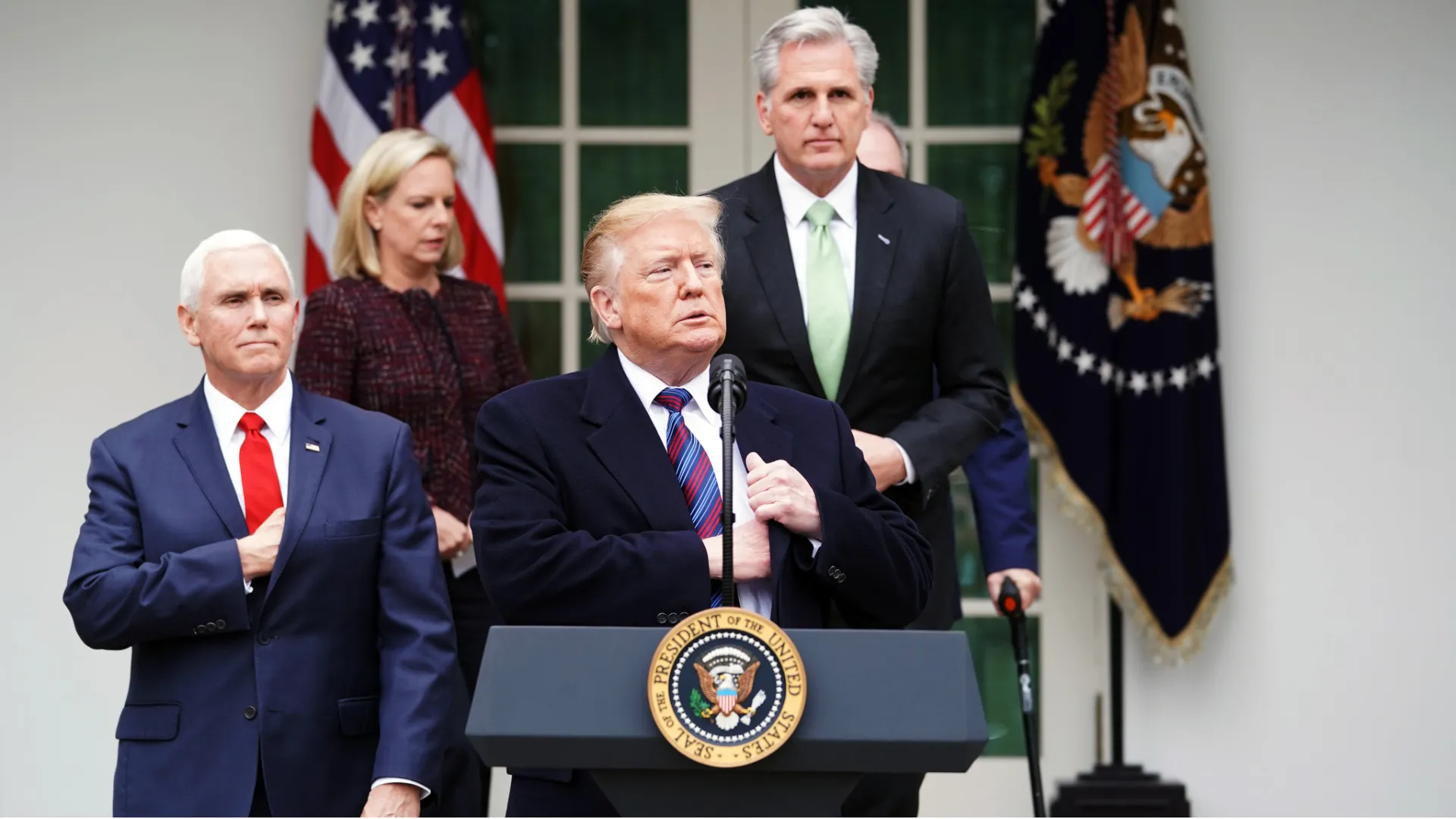
In the fields of Kentucky, the plains of Minnesota, and across the American heartland, uncertainty is growing faster than the crops.
A new wave of tariffs—sparked by President Donald Trump’s sweeping trade moves—has triggered retaliatory action from China, and American farmers are once again caught in the economic crossfire.
For farmers like Caleb Ragland, the stakes couldn’t be higher. “There’s just not any margin for error in the current farm economy,” said Ragland, a Kentucky grower and president of the American Soybean Association.
“We’ve been hanging on, but this could break people.”
That’s because China, in response to the latest tariffs from Washington, has slapped a 34% tax on all American goods, a move that puts billions in U.S. agricultural exports at risk.
Last year alone, China spent nearly $25 billion on American farm products, including soybeans, sorghum, beef, poultry, and corn.
Now, those same products are poised to become significantly more expensive for Chinese consumers—and far less competitive than those from nations like Brazil.
Soybean and sorghum farmers are feeling especially vulnerable. More than half of U.S. soybean production is exported, and China has long been the biggest buyer.
But after Friday’s retaliation, farmers are fearing a long-term loss of market share as China turns to more stable trade partners.

“It’s not just about this year’s harvest,” said Tim Dufault, a retired farmer from northwest Minnesota. “It’s about next year, and the year after that. Once those contracts are gone and China builds new supply chains, we don’t just get them back.”
Dufault, who now leases his land to younger farmers, said the tariff fallout has already dealt a blow to profit margins.
In a typical year, soybean growers might net between $50 and $75 per acre. But recent price drops—fueled by market jitters—have slashed that by nearly $25 per acre* in just two days.
“I just hope to God they can stay in business,” he said, referring to the next generation of farmers. “They were already on the edge, and this might push them over.”
This isn’t the first time American agriculture has been squeezed by trade politics. During Trump’s first term, a similar tariff war with China forced the administration to deploy more than $22 billion in aid to keep farmers afloat in 2019, followed by nearly $46 billion in 2020—though that also included COVID-related relief.
Now, the question on everyone’s mind is: will there be help again?
So far, the answer is unclear.
Agriculture Secretary Brooke Rollins told Fox News that while the administration remains committed to farmers, it’s too early to know if large-scale aid will be necessary.
“This president has always said, and he is resolute in his commitment to our farmers and our ranchers and our great rural communities in America,” Rollins said. “We’ll make sure we’re ready if in fact that is necessary.”
But not every farmer is eager for government help.
“We don’t want to live on handouts,” said Andy Hineman, vice president of the Kansas Grain Sorghum Producers Association. “We’d rather sell the crops we grow.”

One of the long-term concerns among American producers is that China, once alienated, will not return to U.S. suppliers—particularly as nations like Brazil and Argentina continue ramping up production.
“This isn’t just a temporary blip,” said Ragland. “We’re watching our market share go up in smoke.”
China is already a major buyer of American sorghum, a key ingredient in baijiu, a traditional Chinese spirit that rivals whiskey in popularity in the U.S. If that demand shifts elsewhere, the financial impact could be devastating to farmers across the Midwest and South.
And while previous tariff battles were more limited, Trump’s latest round extends around the globe. That has farmers fearing broader retaliation—not just from China, but from other major trading partners.
In Missouri, Bryant Kagay helps manage a multi-generational farm in the town of Amity. Like many in rural America, he supports conservative economic principles—but he’s skeptical about the administration’s current approach.
“I don’t have a lot of faith that these tariffs—at least the way they are laid out today—are going to stick around long enough to make a difference,” Kagay said. “And I really hate the idea that the solution is just to toss out some federal money to patch things up.”
He pointed to rising national debt and massive government spending as reasons to be wary. “A government that’s already overspending doesn’t need to solve one problem by creating another,” he added.
Still, some farmers are holding onto a cautious hope that the tariffs are part of a broader negotiation strategy—one that might eventually lead to lower trade barriers globally.
“That’s the type of development we need,” Ragland said. “Get some strong deals done, proactively. Not just this tit-for-tat trade punishment.”

Following the announcement of new tariffs earlier in the week, crop prices fell alongside the stock market. The economic tremors were felt far beyond Wall Street, especially in regions where farming remains the primary source of income.
“This could be the beginning of a very difficult year,” said Hineman. “We were already looking at thin margins. Now they’re practically invisible.”
The domino effect could be profound: lost profits lead to layoffs, lower equipment sales, and rising debt across rural economies already struggling to rebound from inflation and pandemic disruptions.
While urban political debates dominate headlines, the fallout from the tariff war is poised to hit rural communities the hardest. In many of these areas, farming isn’t just an industry—it’s a way of life, passed down through generations.
For older farmers like Dufault, the concern isn’t just economic. It’s existential.
“We’re risking the future of family farming,” he said. “We’re asking young people to carry the torch, but we’re giving them gasoline and a match.”
That sentiment is echoed across farming co-ops, trade groups, and rural banks now reassessing loan risk for the upcoming season.
With the 2026 midterms looming, the political implications of the tariff fallout are hard to ignore.
Many of the most affected regions are in Trump-friendly states, and while loyalty remains high, some farmers are beginning to question the cost of ongoing trade battles.
“People still respect him, but there’s frustration,” one Iowa corn grower said anonymously. “It’s not about politics—it’s about survival.”
That complexity makes farm states a potentially volatile element in next year’s elections. If rural economies continue to falter, even reliably red districts could see cracks.
Still, the Trump administration believes the trade gambit will pay off.
“If we come out of this with stronger trade deals, it’ll be worth it,” one senior official said. “But we have to stick it out.”

In the meantime, farmers and ranchers are pleading for a middle ground—one that balances economic nationalism with the realities of global markets.
“We understand what the president’s trying to do,” said Ragland. “We want fair trade. We want our markets respected. But this cycle of escalating tariffs hurts the very people who helped build this country.”
And with planting season underway, many farmers are hoping the seeds they’re sowing today will bear something more than crops—a sign that common ground, and common sense, might still be possible.



